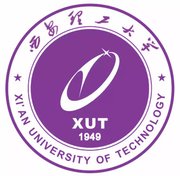Xi'an University of Technology is a high-level university jointly built by the central and local governments and a key construction of Shaanxi Province. In July 2020, the school became a university jointly established by the Ministry of Industry and Information Technology and Shaanxi Province. The school is one of the important training bases and scientific research centers for senior professionals in the water conservancy and hydropower, equipment manufacturing, printing and packaging industries in Northwest my country.
The predecessor of the school was Beijing Institute of Mechanical Engineering, established in 1958, and Shaanxi University of Technology, established in 1960. The educational history of the two schools can be traced back to the Peiping Public Commercial Tutorial School founded by Fan Yuanlian, the head of education of the Republic of China in 1919, and the National Xi'an Temporary University (Water Conservancy Group of the Department of Civil Engineering) established in 1937. In 1972, Beijing Institute of Mechanical Engineering and Shaanxi University of Technology merged to form Shaanxi Institute of Mechanical Engineering, under the First Ministry of Machinery Industry. In 1994, the school changed its name to Xi'an University of Technology with approval. In 1998, the school was transferred to Shaanxi Province, and the management system was adjusted to be jointly built by the central government and Shaanxi Province, with the management of Shaanxi Province as the mainstay. In 2002, Shaanxi Province approved the integration of Xi'an Instrument Industry School into Xi'an University of Technology. The school started its celebration with the National Peiping Advanced Industrial Vocational School, the predecessor of the Beijing Institute of Mechanical Engineering, taken over by the People's Government in 1949. May 1 is the school anniversary.
The school has 3 campuses of Jinhua, Qujiang and Lianhu and 1 University Science and Technology Park. There are more than 18,000 full-time undergraduates and nearly 8,000 doctoral and master students. There are more than 2,660 faculty members , including more than 970 senior titles . Now there are 17 colleges and 1 teaching department, 69 undergraduate majors, 10 majors are national characteristic major construction sites, 16 majors have passed the engineering education professional certification (assessment), and 25 majors have been selected as national first-class undergraduate major construction sites. , 32 majors have been selected as first-class majors in Shaanxi Province, 16 majors are characteristic professional construction points in Shaanxi Province, and 8 majors are famous brand majors in Shaanxi Province. There are 21 undergraduate experimental teaching centers, including 3 national-level experimental teaching demonstration centers, 18 provincial-level experimental teaching demonstration centers, and 3 provincial-level virtual simulation experimental teaching centers.
The school insists on taking discipline construction as the leader, and solidly promotes the construction of first-class disciplines, and its core competitiveness has been steadily improved. The school is one of the first universities in my country to obtain the right to confer doctoral, masters, and bachelor's degrees. Graduate education began in 1960 and the Graduate School was established in 2011. There are 14 first-level disciplines authorized by doctoral degree, 25 first-level disciplines authorized by master's degree, and 11 authorized master's degree programs, covering all undergraduate majors. There is 1 national first-level key discipline (covering 5 second-level disciplines), 21 key disciplines in Shaanxi Province, and 12 advantageous disciplines in Shaanxi Province. Engineering disciplines and materials science disciplines rank among the top 1% of ESI's global disciplines. In the fourth round of national discipline evaluation in 2017, three disciplines including water conservancy engineering, control science and engineering, and management science and engineering entered the top 20% in the country, and three disciplines including materials science and engineering, mechanical engineering, and Marxist theory entered the country. Top 30%; 5 disciplines including Instrument Science and Technology, Electronic Science and Technology, Civil Engineering, Environmental Science and Engineering, and Business Administration entered the top 40% nationwide. In the "2021 Academic Ranking of Academic Rankings of Global Universities", the school ranks 601-700 of the world's universities and 89-106 of the national universities.
The school actively promotes the strategy of "strengthening the school with talents", takes talent work as the top priority of school development, and continuously strengthens the construction of the teaching staff. The school established the "Sheikh Te Manno Award New Materials Research Institute" and built 13 academician studios. There are 4 double-appointed academicians. There are 17 national-level talents and 1 Huang Danian-style teacher team in colleges and universities across the country. 6 winners of the National Science Fund for Distinguished Young Scholars, National Science Fund for Outstanding Young Scholars, and China Youth Science and Technology Award, 5 national-level candidates for the New Century "Hundreds and Thousands of Talents Project", 8 people from the Ministry of Education's "New Century Excellent Talents Support Program", Chinese Academy of Sciences "Hundred Talents Program" 3 people. There are 6 national outstanding teachers and national advanced workers, and 13 experts who enjoy special government allowances from the State Council. 43 people were selected into the Shaanxi Provincial High-level Talent Program, 11 people from the "Special Support Plan", 2 people from the "Sanqin Scholars" innovation team, and 21 people from the "Young Outstanding Talents" support plan of colleges and universities. 1 member of the Disciplinary Evaluation Group of the Academic Degrees Committee of the State Council, 7 members of the Professional Teaching Steering Committee of the Ministry of Education, and more than 40 provincial and ministerial-level experts, model workers, advanced workers, outstanding teachers, famous teaching teachers, and models of teacher morality. people.
Show less
